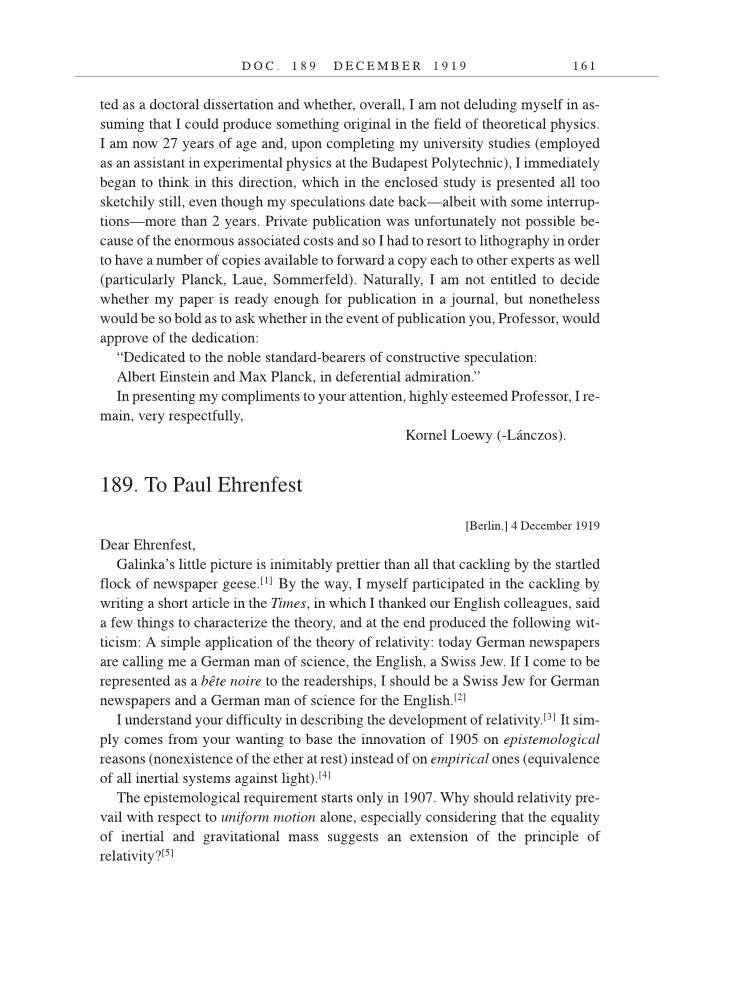D O C . 1 8 9 D E C E M B E R 1 9 1 9 1 6 1 ted as a doctoral dissertation and whether, overall, I am not deluding myself in as- suming that I could produce something original in the field of theoretical physics. I am now 27 years of age and, upon completing my university studies (employed as an assistant in experimental physics at the Budapest Polytechnic), I immediately began to think in this direction, which in the enclosed study is presented all too sketchily still, even though my speculations date back—albeit with some interrup- tions—more than 2 years. Private publication was unfortunately not possible be- cause of the enormous associated costs and so I had to resort to lithography in order to have a number of copies available to forward a copy each to other experts as well (particularly Planck, Laue, Sommerfeld). Naturally, I am not entitled to decide whether my paper is ready enough for publication in a journal, but nonetheless would be so bold as to ask whether in the event of publication you, Professor, would approve of the dedication: “Dedicated to the noble standard-bearers of constructive speculation: Albert Einstein and Max Planck, in deferential admiration.” In presenting my compliments to your attention, highly esteemed Professor, I re- main, very respectfully, Kornel Loewy (-Lánczos). 189. To Paul Ehrenfest [Berlin,] 4 December 1919 Dear Ehrenfest, Galinka’s little picture is inimitably prettier than all that cackling by the startled flock of newspaper geese.[1] By the way, I myself participated in the cackling by writing a short article in the Times, in which I thanked our English colleagues, said a few things to characterize the theory, and at the end produced the following wit- ticism: A simple application of the theory of relativity: today German newspapers are calling me a German man of science, the English, a Swiss Jew. If I come to be represented as a bête noire to the readerships, I should be a Swiss Jew for German newspapers and a German man of science for the English.[2] I understand your difficulty in describing the development of relativity.[3] It sim- ply comes from your wanting to base the innovation of 1905 on epistemological reasons (nonexistence of the ether at rest) instead of on empirical ones (equivalence of all inertial systems against light).[4] The epistemological requirement starts only in 1907. Why should relativity pre- vail with respect to uniform motion alone, especially considering that the equality of inertial and gravitational mass suggests an extension of the principle of relativity?[5]
